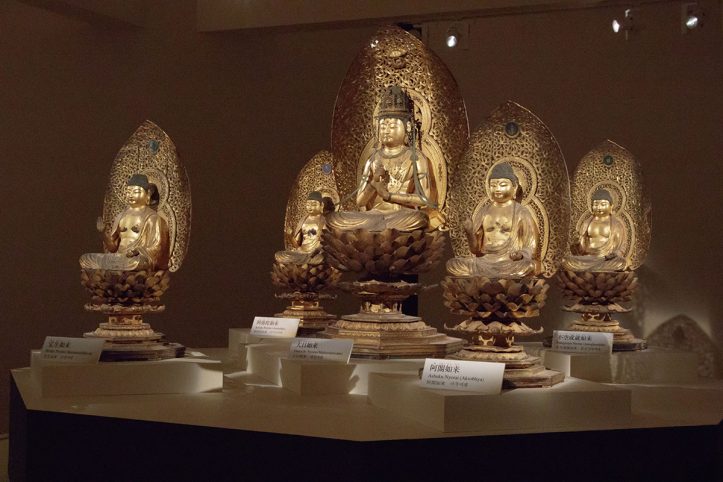
Goshiri Nyorai Seiza Osaka · Kanji Temple Collection
From January 16 (Tuesday) to March 11 (Sun) of 2018, the Tokyo National Museum holds a special exhibition "Only Ninna-ji and Mikui schoolbanks – treasure of Tenpyo and Shingon Buddhism" – is held. Since the exhibition was held on 15th January, I will tell you how it is.
Cherry-blossom viewing cherry tree famous as "late blooming cherry". The cherry blossoms cherry blossoms in the precincts of Kyoto · Ninna-ji temple have been popular as cherry blossoms of the common people since the Edo period. Ninna-ji was founded in 888, is the head temple of Omuya temple of about 790 temples nationwide. "Oimuro" is a room (a separate room of a priest) that was made for Emperor Uda who founded Ninna-ji, but since the Kamakura period it became an alias for Ninna-ji itself.
In the Kamakura era's famous essay writing "Shogakusa", many monks of Ninna-ji, full of humanity, such as a ji-jitsu who has drunk and wears foot ding (three-legged kettle) from the head and has not come out, appears. It might have been a temple that made us feel familiar somewhere while dressed in the dignity as the headquarters.
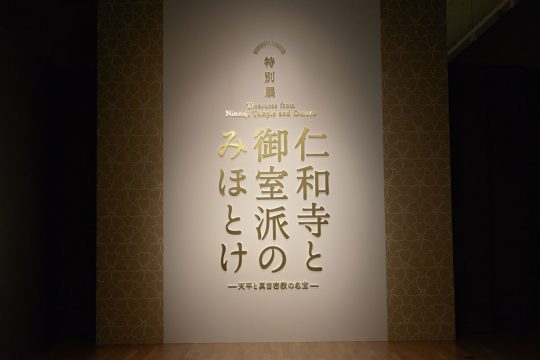
In this exhibition, a total of 170 bodies including sculptures of 66 such as secret Buddhist monasteries that are stored in the Omuro Temple in the whole country, including the treasure of Ninna-ji, such as the national treasure "Amida Nyorai Seiza" which is the main honor at the time of construction Temple trees are gathered at once. Even if you go to the temple, you will not be able to see the rare occasions, such as displaying 8 secret privately held secret bodies together.
Let me show you the contents of the exhibition.
Chapter 1 History of Miro Tominari

Exhibition landscape
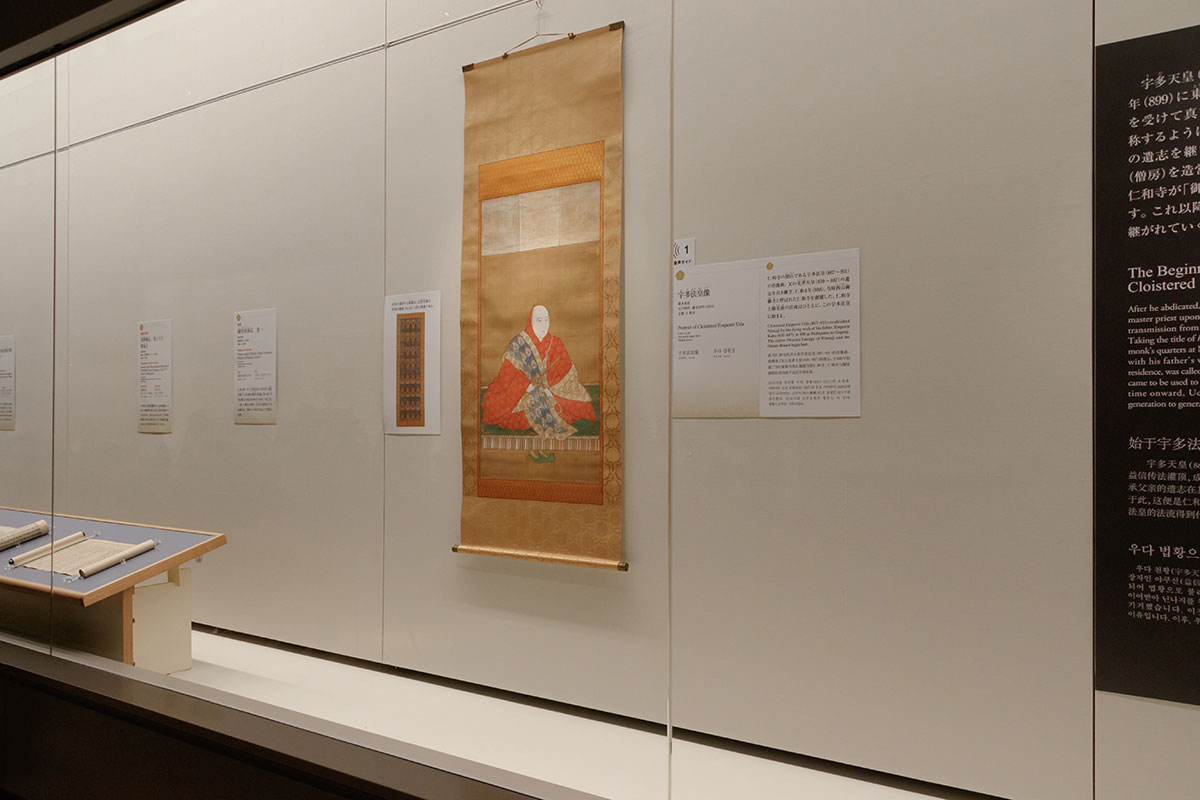
Statue of the Puppet of Uton Collection of Ninnaji Temple
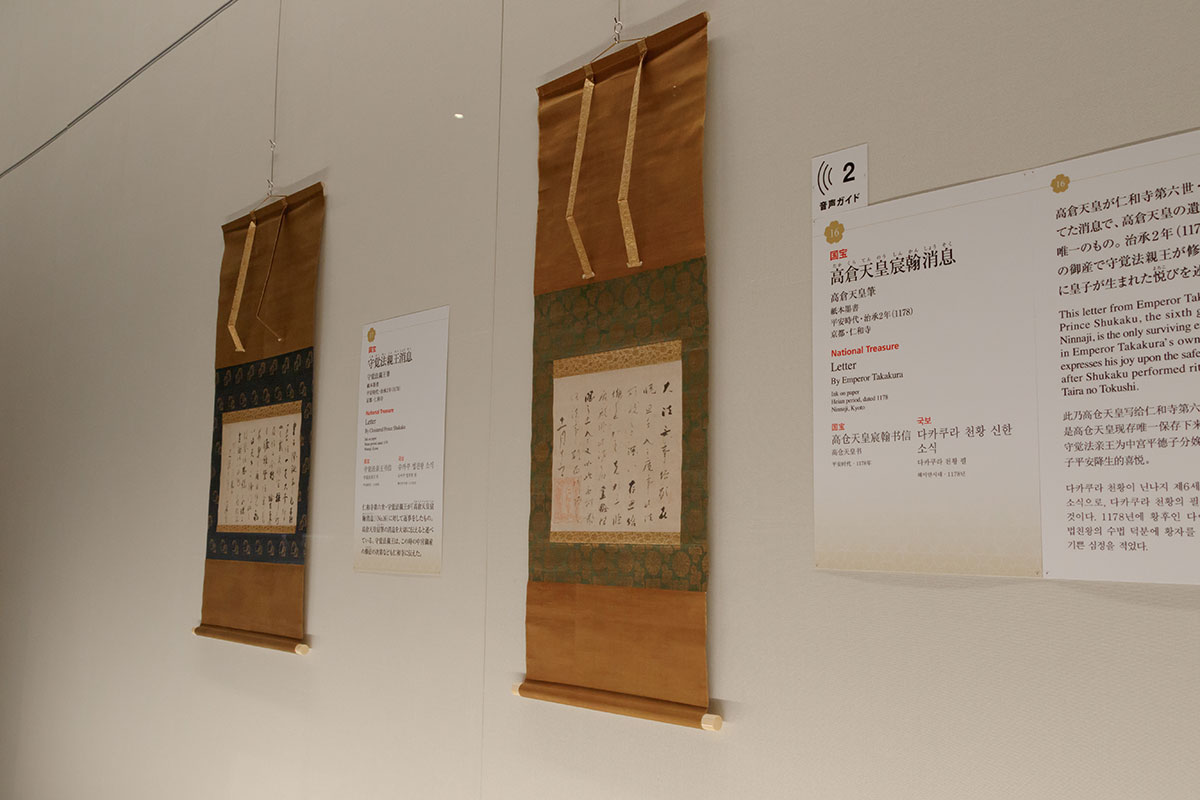
(Left) Protective law principal (right) Emperor Takakura reporter Hirakata collection Ninna Temple Collection
Ninna-ji begins construction with the request of the Emperor Mitsutaka Takanori, was built by Emperor Utah in 4th year of Rika. After that, Ninna-ji Temple was adored as a goddess (the temple of the imperial family) from the successive emperor and kept a close relationship with the imperial family.In the first chapter, in the book of the emperor's autograph left in Ninna-ji ), We will follow the history of Ninna-ji through historical portraits and crafts.

Collection of Ninna-ji Temple booklet
In the history of Japan 's exhibition, "Thirty – booklet" which will be released for the first time (from 16th to 28th) only. It is a very valuable Terakoba that can be called the "eyeball" of this exhibition. Kobo Daishi When Kukai crossed China (Tang), he copied the scriptures and brought them back to Japan, it is truly a "National Treasure of Miracles" that has been protected at Toji, Koyasan, and Ninna-ji.
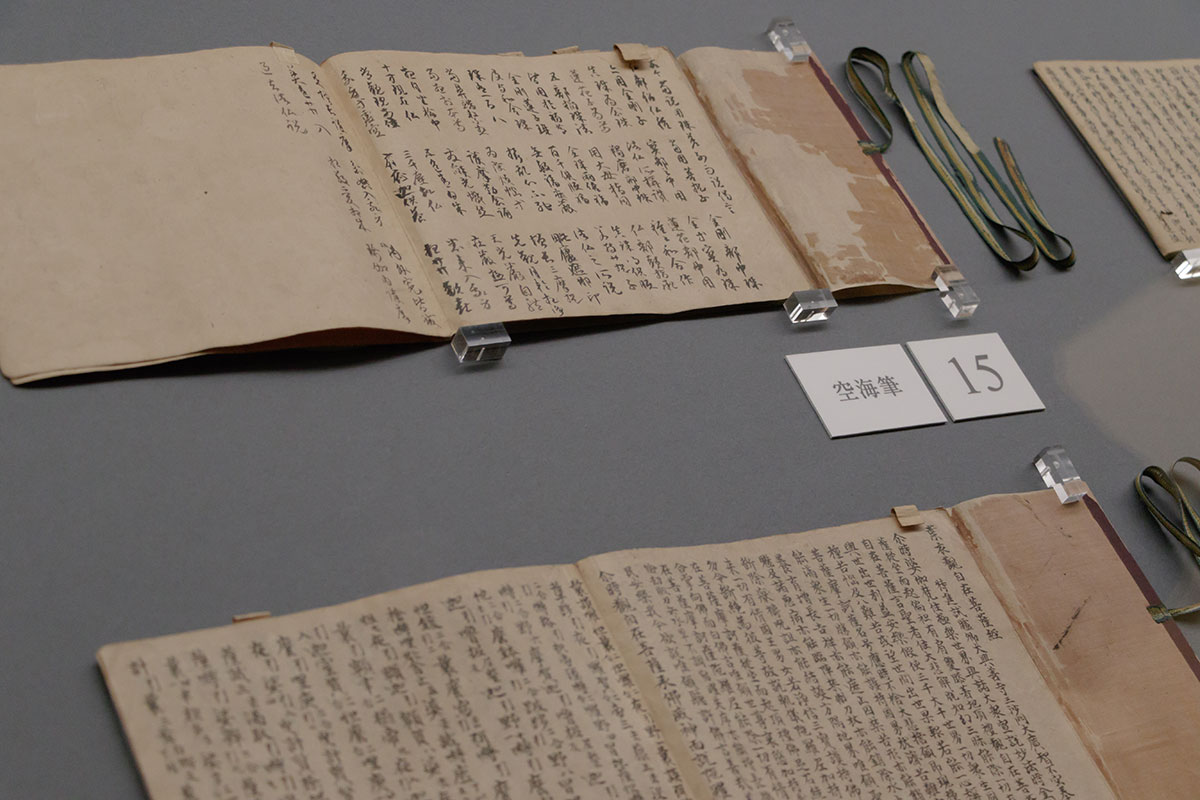
Thirty-booklet (enlarged) Collection of Ninna-ji temple
There are things written by the Kaikai himself in addition to Tang's photographer in the 30th book, and you can see the typeface of "Floor, row, grass". It might be interesting to compare the fancy font of a very tight, serious Tang duo with the fancier of Kukai. Would not it be felt that a brilliant impression would be felt open-minded to the brushstrokes of Kukai anywhere?
Chapter 2 The World of Reproduction
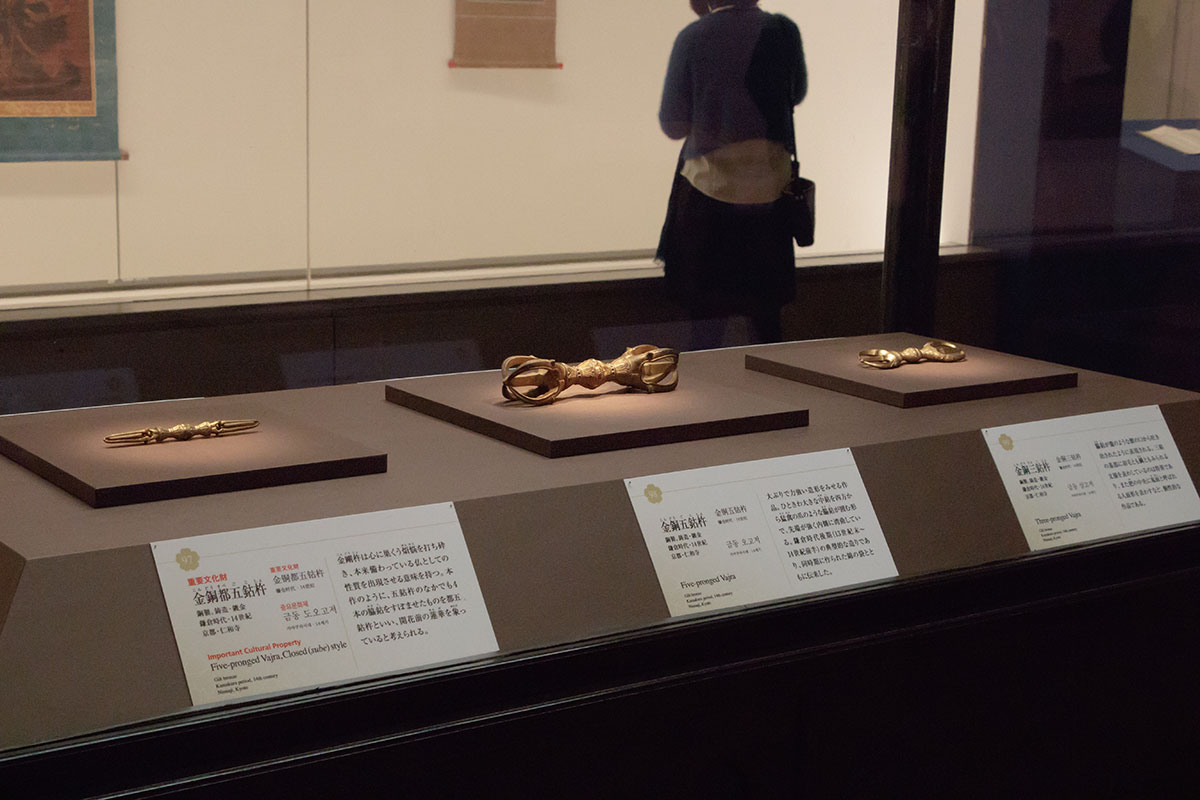
(Left) Bronze Metropolitan Government Five Pillows (Central) Bronze Copper Filled Pitcher (Right) Bronze Copper Three Piece Collection of Ninnaji Temple

(Middle) Fudo statue (left and right) Fourth generation Meiu statue Collection of Ninnaji temple
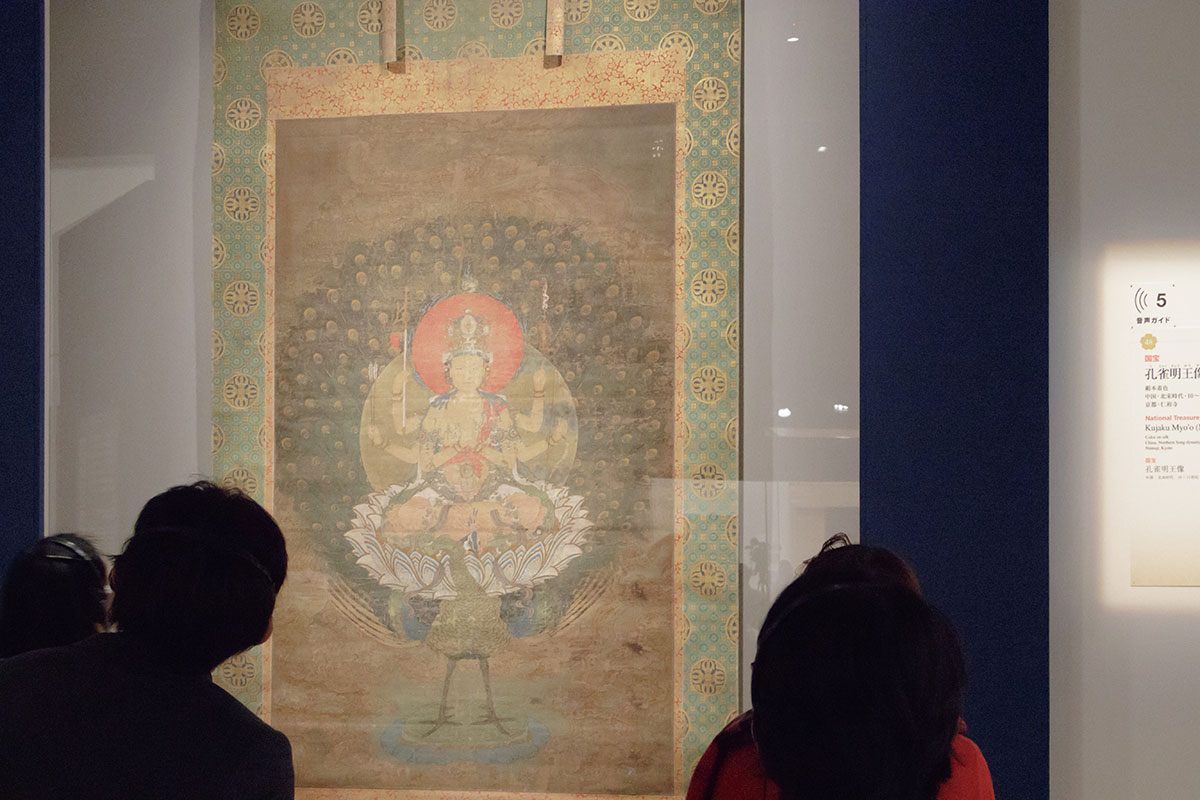
Peacock Ming Observation Collection of Ninnaji Temple
Since Ninna-ji Temple is Kōkō Daigaku Koumi as a sect of religion, a lot of treasure concerning the esoteric method of reproaching is transmitted. It is a ceremony that gives various influences to the real world by the power of the Buddha. For the prayers of the defense country, during the Heian period the epistemism was being repaired as a national event.
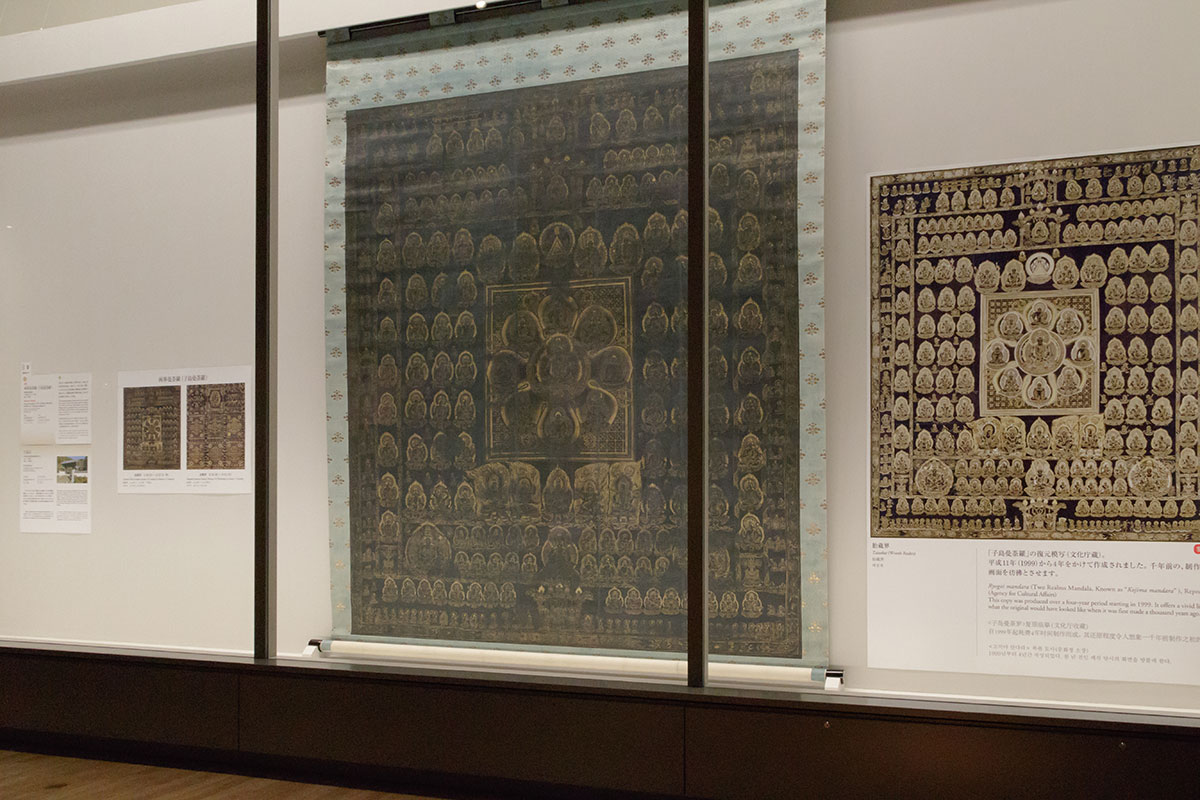
Both military mandalas (Kojima Mandala) Collection of Nara and Kojimaji
A huge "Buddhist mandala" drawn with gold and silver mud in the dark blue spot. It is a very valuable work as an example of the early Heian period. Bilateral mandala is a representation of the world view of Esoteric Buddha with numerous Buddha statues centered on Dainichiro. When you look at it gently, you will feel comforted getting drawn to that mysterious world view, cosmic view.
Chapter 3 Takara luck in your own room
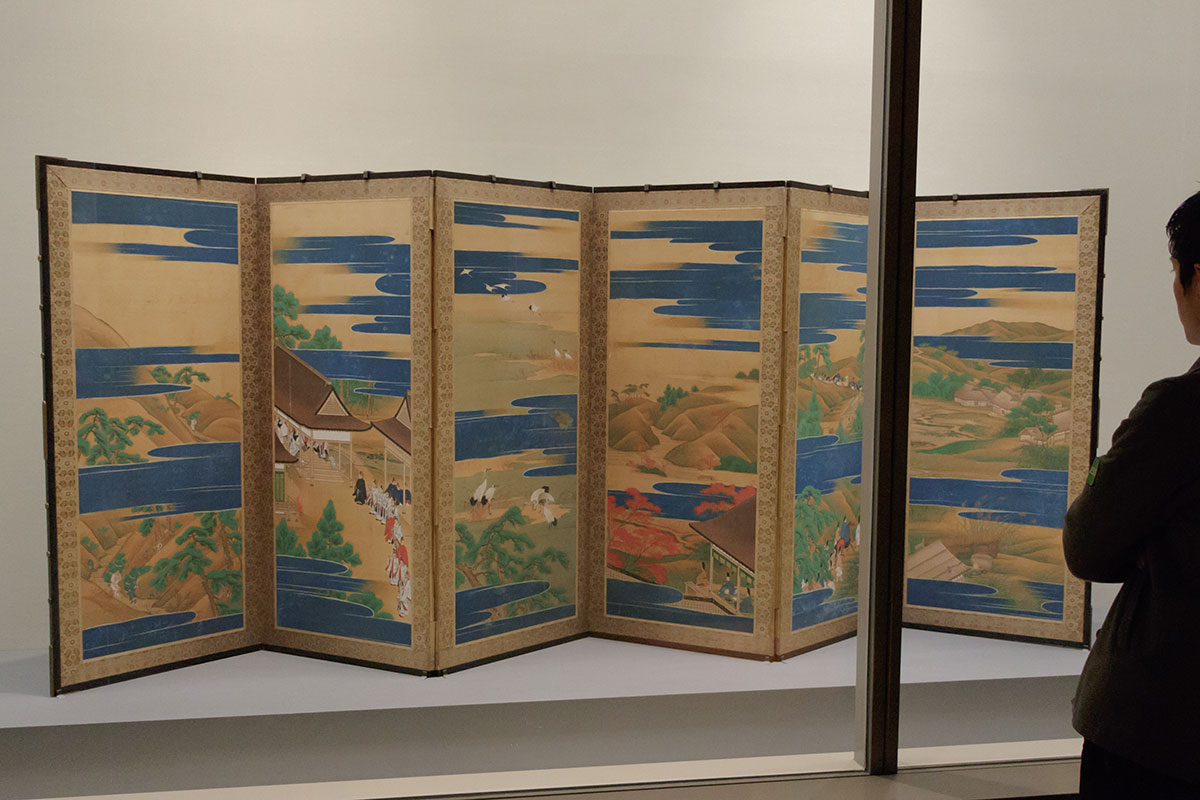
Sansui folding screen Collection of Ninnaji temple
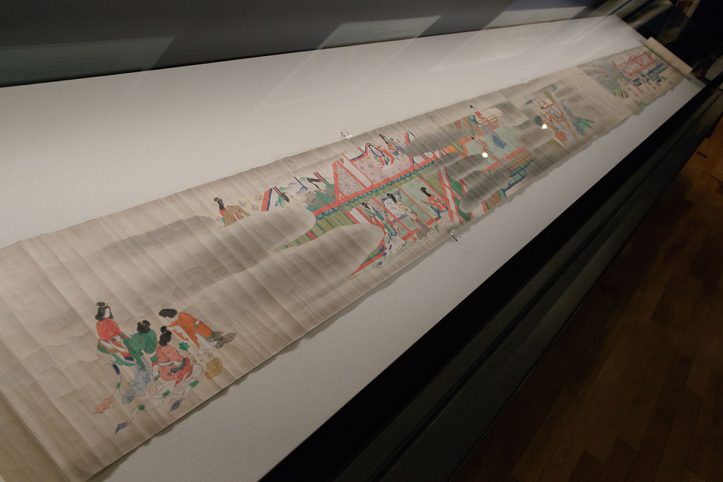
Hiko Firework Emblem Taku picture Collection of Fukui / Atsutobyoji
A tremendous number of things were transferred under the control of Ninnaji due to the death of Emperor Uta, which resulted in the establishment of the treasure house of Ninna-ji. Also, various treasure trees are transmitted to treasure houses of Shingon sect and Omuro Temple temple which has Niiwa Temple as the principal mountain. In the third chapter, masterpieces of Ogon 's books and crafts that had never had a chance to be introduced in the past have been exhibited at once.
Chapter 4 The revival of the Edo in Ninna-ji Temple and Kannondo
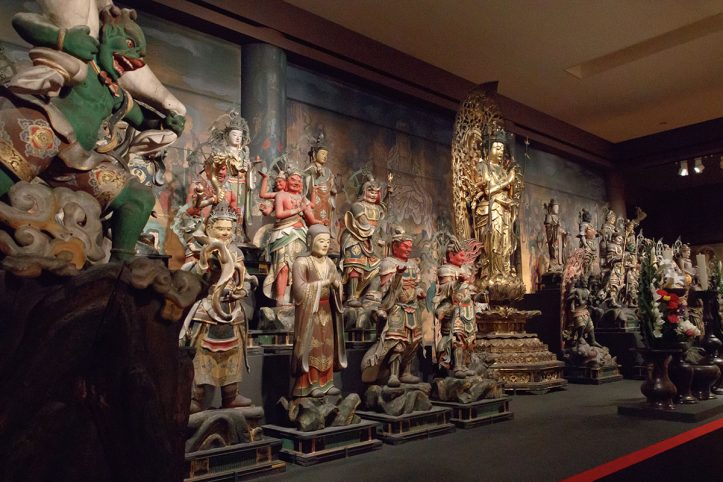
The temple of Ninna-ji Temple, which disappeared in the turbulence of Kyoto's battlefield, was revived in the early Edo period with the help of the deep-sea principal. In the fourth chapter, various works related to the reconstruction of the Edo of Ninna-ji are displayed, the most interesting of which is the inside of Kannondo (general closed) reproduced in the exhibition room. A tranquil space where 33 Buddha statues were placed. We will fill the exhibition ground with overwhelming majesty.
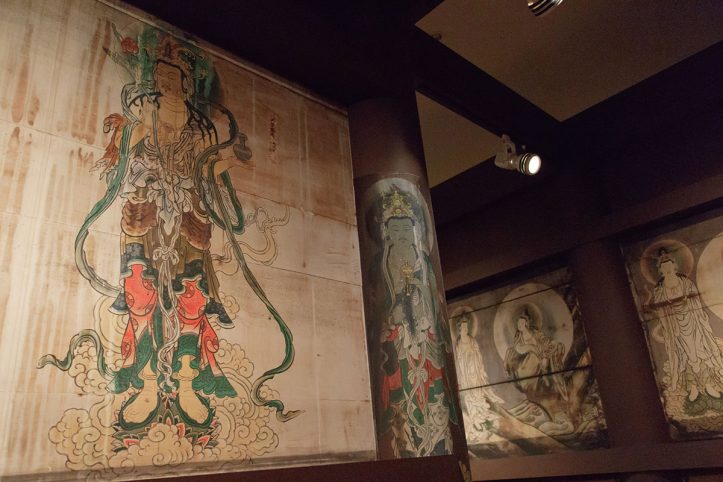
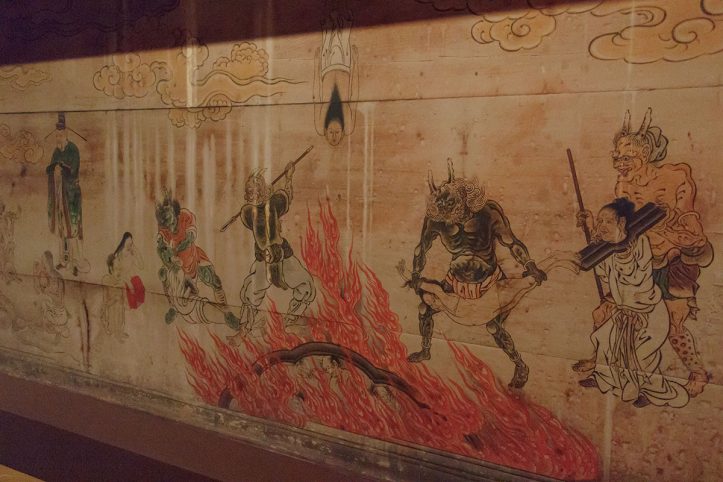
Mural painting inside the Kannondo reproduced by high definition images. On the upper and middle walls of the wall are painted figures of the six-sacred note excluding Honjyo Senjuon Bodhisattva, and the lower line shows the six worlds where Rokkishin rescues. This is a picture of "Hell Path".
Chapter 5 Bounds of Oguri school
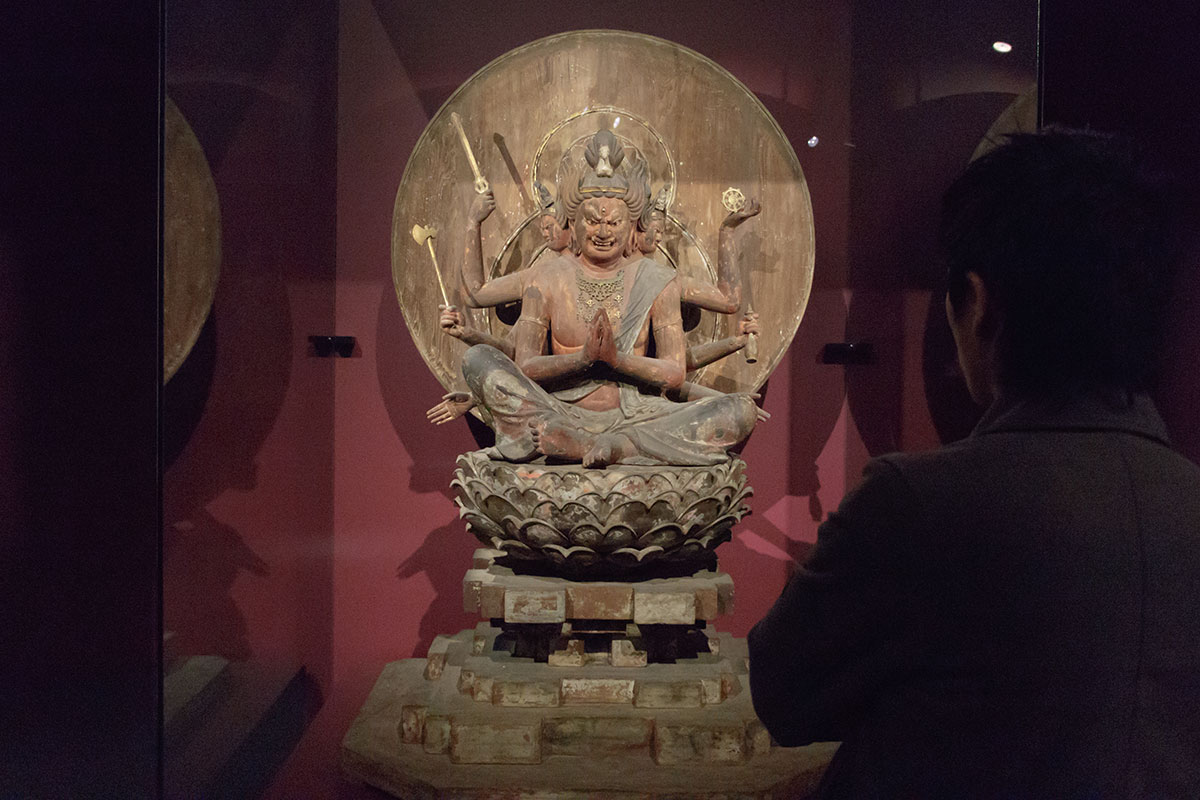
Bodhisattva Bodhisattva Seizure Collection Fukui / Nakayamaderaji Collection
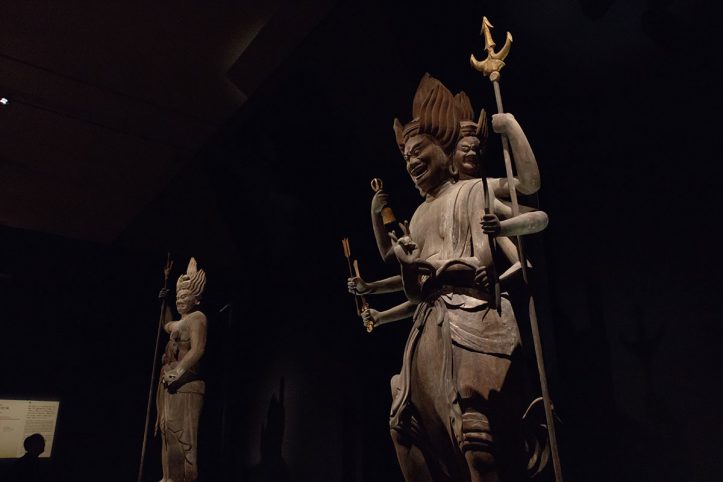
(Front side) Sansa Obashi Statue (Oku) Fisher Admiral Statue Collection in Fukui-Awaji Temple Collection

Hachiman god Mainland Buddha seat image Kagawa · Nagakuteji
I breathe in unexpectedly to the hidden secret Buddha.
In the final chapter, precious Buddha statues around the country are being exhibited, including the secret Buddha which is not normally open.
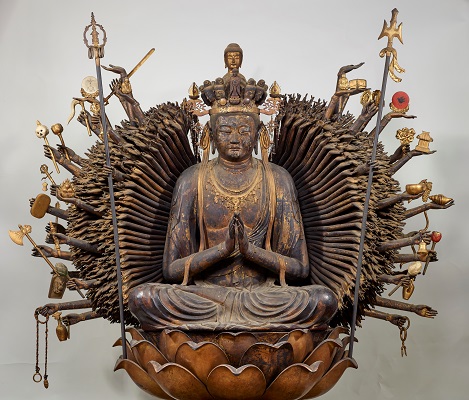
National treasure "Senju Kannon Bodhisattva Seated Image" Nara era · 8 th century Osaka · Kuziiji temple exhibition period: February 14 – March 11
There are some secret statues displayed at the end of the exhibition (February 14 – March 11), such as the national treasure "Senjo Kannon Bodhisattva Seated Satellite" and National Treasure "Yakushi Sitting", so check the schedule before viewing Where you want. In particular, "Senju Kanon Bodhisattva Seated Satellite" comes to Tokyo since the opening day of the Edo period.
Please visit the venue and see the valuable "Senju" that there are 1041 pieces!
Outline summary is here
https://home.ueno.kokosil.net/en/archives/20012


